Are you a passionate angler seeking a unique and challenging experience? Come to the Gulf Coast and discover sight fishing for redfish – an exhilarating adventure that will test your knowledge of the water, angling skills, and patience.
Sight fishing for redfish is not just a recreational sport, but also a journey to explore the untouched natural beauty of the Gulf Coast, where schools of redfish playfully swim in crystal-clear shallow waters. Immerse yourself in the tranquility of nature, savor the thrill of stalking your prey, and erupt in triumphant joy when you conquer the brilliant redfish.
Sight Fishing Redfish in the Gulf Coast: An Adventure Not to Be Missed
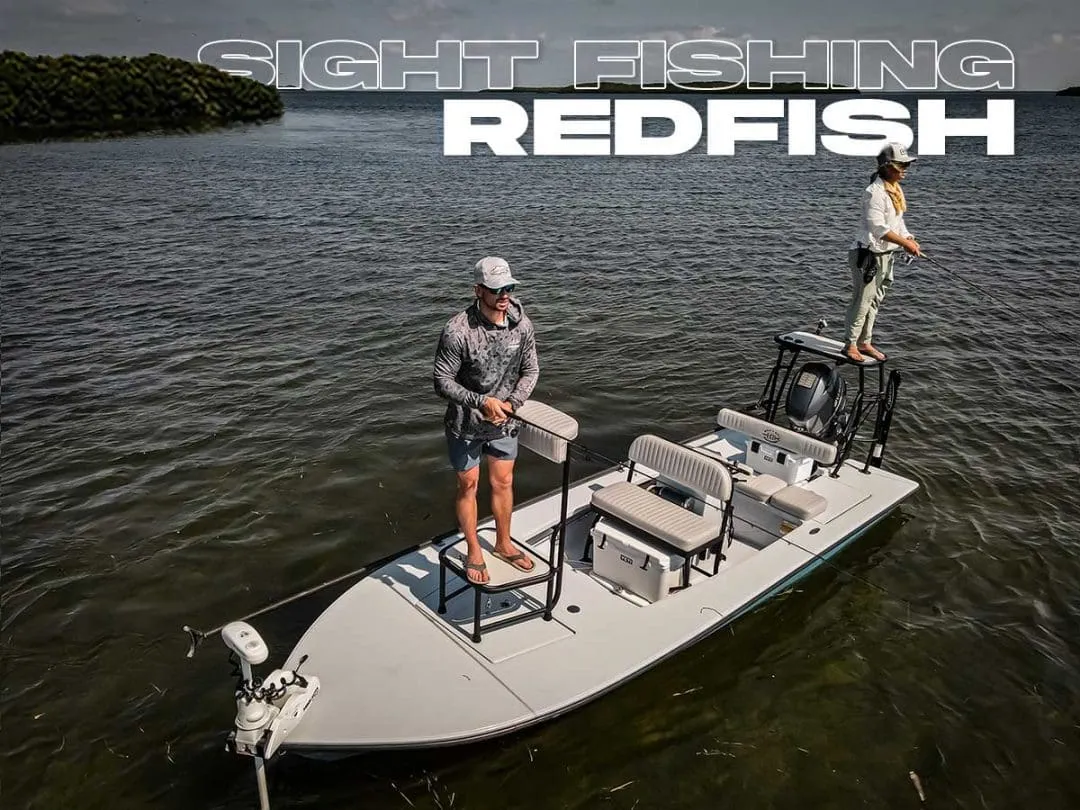
Sight fishing for redfish in the Gulf Coast is an unforgettable experience, whether you are a seasoned angler or just starting out. Imagine gliding silently in your kayak, weaving through shallow, turquoise waters. The morning sun shines on the surface, revealing the copper-red backs shimmering beneath. You hold your breath, gently cast your bait, and wait for the moment a redfish lunges to strike, triggering powerful rod jolts and thrilling chases.
This experience not only offers the excitement of conquering a powerful fish, but also the chance to admire the pristine beauty of the Gulf Coast, explore its diverse ecosystem, and enjoy moments of pure relaxation in nature.
Redfish: The Prized Catch of Coastal Saltwater
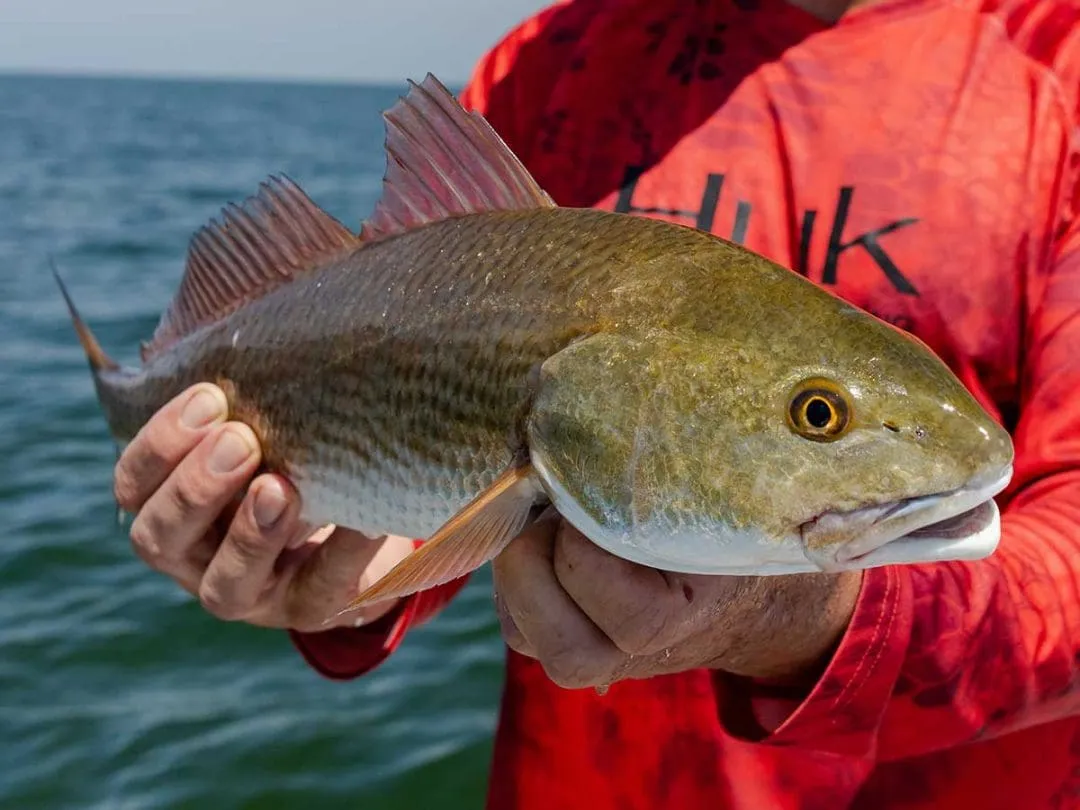
Redfish, also known as red drum, are among the most sought-after sport fish for inshore anglers. They are renowned for their strength and tenacity in every fight, offering dramatic and exciting battles for anglers. Redfish can be caught using various techniques, but sight fishing is considered one of the most challenging and rewarding methods.
Redfish primarily inhabit the coastal and estuarine waters along the Atlantic and Gulf Coasts of the United States. They are easily recognizable by their distinctive copper-red color and prominent black spot near the tail. Redfish are bottom feeders, preferring shallow waters with diverse structures such as oyster beds, seagrass beds, and docks.
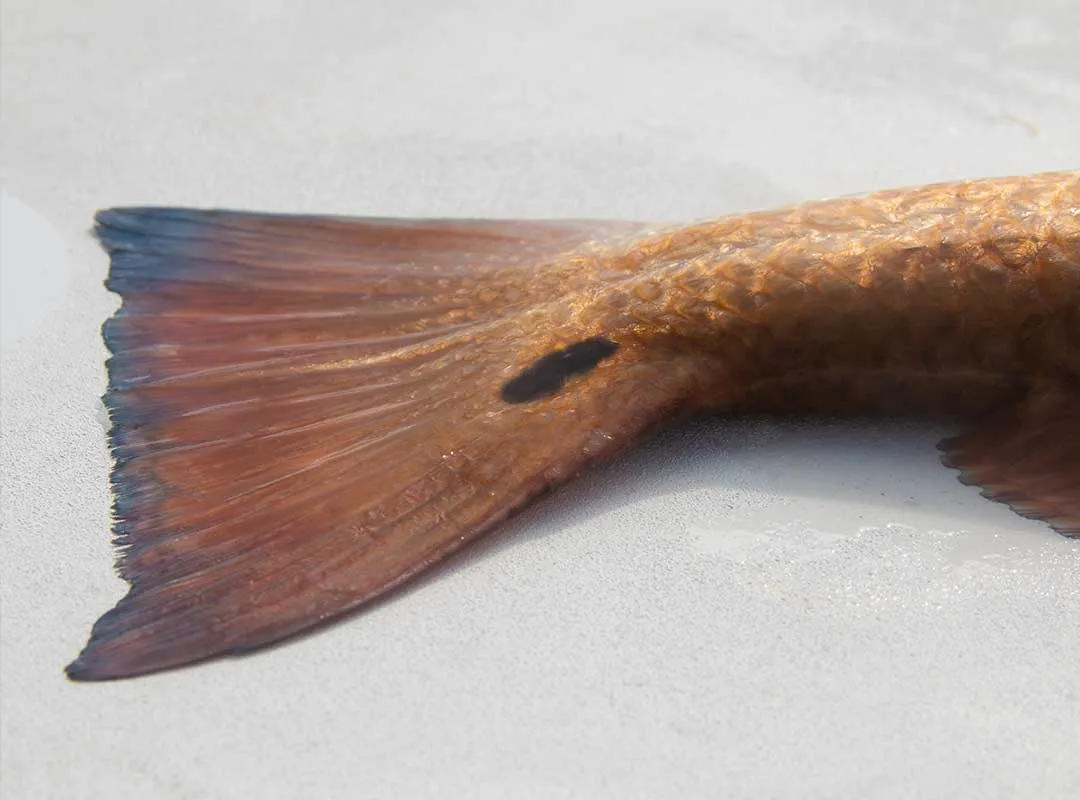
Secrets to Sight Fishing Redfish: Expert Tips
Sight fishing for redfish can be challenging, but that’s what makes it so exciting and rewarding. To increase your chances of success in your quest to conquer this species, consider these helpful tips:
Move Slowly and Stay Quiet: Redfish are highly sensitive to noise and vibrations. Move your boat or kayak gently, avoiding loud noises that could spook the fish.
Observe Carefully: Focus on the water’s surface to spot signs of redfish, such as shadows, dorsal fins, or tails breaking the surface. Sometimes, you can also detect their presence through small ripples or unusual water disturbances.
Cast Accurately: Once you’ve located a fish, cast your bait gently and precisely ahead of its path. Avoid casting directly into a school of fish, as this may startle them and cause them to flee.
Vary Your Retrieve: Redfish may have different preferences for retrieve speed and style. Experiment with various techniques until you find what effectively attracts the fish.
Be Patient and Adaptable: Sight fishing for redfish requires patience and flexibility. Don’t be discouraged if you don’t succeed on your first try. Continue to observe, experiment, and adjust your tactics until you achieve your goal.
Prime Time for Redfish Fishing
The best times to fish for redfish are early mornings before the sun gets high and late afternoons when the sunlight softens. During these times, the water temperature is cooler, and redfish become more active and feed more aggressively.
Additionally, late summer and mid-fall are considered the peak redfish fishing seasons, especially in areas with seagrass beds. September is often regarded as the “golden month” for redfish fishing as water temperatures begin to drop, creating ideal conditions for the species to thrive.
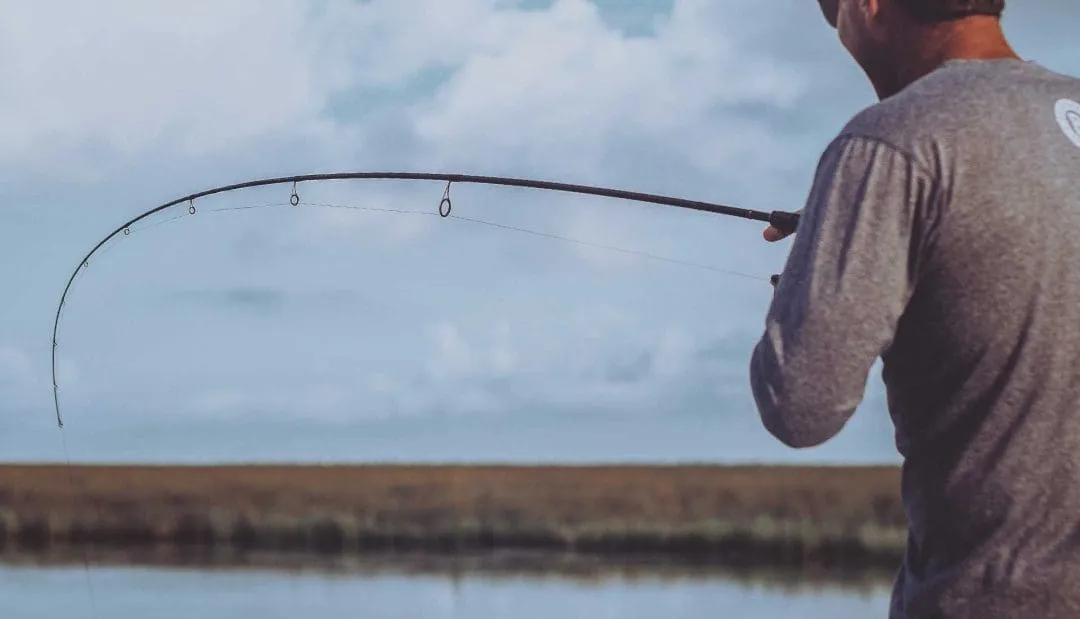
Effective Redfish Baits
Both artificial lures and live bait can be used for redfish fishing. For artificial lures, white paddle-tail soft plastics, 3 to 5 inches long, paired with a 1/8 to 1/2 ounce red jighead, or weedless gold spoons, retrieved slowly near the bottom, are often highly effective.
For live bait, shrimp, crabs, mullet, or menhaden are excellent choices. Live shrimp can be hooked directly or used with a popping cork. Crabs and mullet are also favorite meals for redfish, especially larger ones.
Ideal Locations for Sight Fishing Redfish
The Gulf Coast of the United States is renowned for its excellent sight fishing for redfish locations. To pinpoint the best spots, consider factors like water depth and bottom structure.
Shallow Waters: Louisiana’s marshes and estuaries offer ideal redfish habitats, especially in shallow water areas. Texas also boasts diverse structures like docks, flats, and bayous, creating rich environments for this species.
Flats and Inlets: The Florida Panhandle is another popular destination for sight fishing redfish, particularly in the flats and inlets along the coast.
Seek Out Bottom Structure: The Key to Success
When searching for redfish locations in the Gulf Coast, prioritize areas with diverse bottom structures such as oyster beds, mangrove forests, and seagrass beds. These structures are natural havens and feeding grounds for redfish, offering excellent opportunities to spot and conquer them.
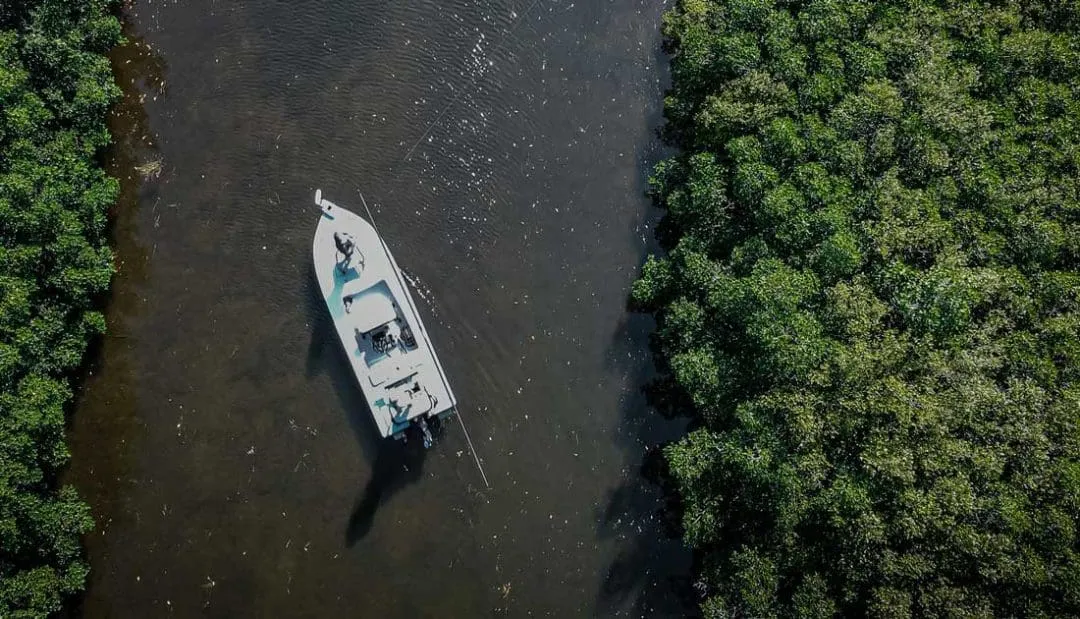
Channels, Drop-offs, and Depth Changes: Redfish often congregate in areas with depth variations, such as channels or drop-offs. These areas are hotspots for sight fishing redfish.
The Gulf Coast provides countless habitats and bottom structures suitable for sight fishing redfish. Exploring different areas will help you discover new and exciting fishing spots.
Fishing Redfish with the Tide
Tides play a crucial role in redfish fishing. As tides rise and fall, the currents create disturbance, stirring up the seabed and carrying food, attracting redfish to feed. This is an ideal time for sight fishing redfish.
High Tide: As the tide rises, water floods into coastal grass flats, creating perfect feeding areas for redfish. They move into these areas to hunt prey, primarily small fish and crustaceans like shrimp and crabs, which are abundant in seagrass beds.
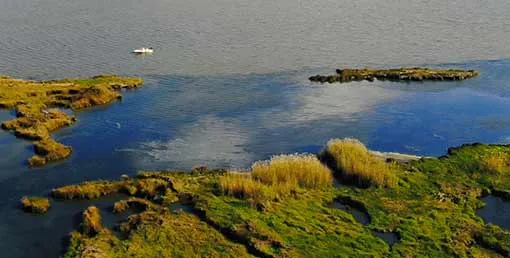
Low Tide: As the tide recedes, redfish move to deeper waters such as channels and drop-offs. You can also find them in estuaries, bays, and lagoons, especially where freshwater and saltwater mix.
To fish redfish effectively, thoroughly study tide charts and the bottom structure of your fishing area. Understanding tides and currents will help you locate fish and increase your chances of success.
Artificial Lures and Live Bait: Secret Weapons to Conquer Redfish
Artificial Lures:
- Soft Plastic Lures: Versatile, diverse, mimicking various prey like shrimp, crabs, small fish. Popular choices: Berkley Gulp! Saltwater Shrimp, Z-Man SwimmerZ.
- Topwater Lures: Create noise and surface disturbance, enticing redfish to strike. Popular choices: Heddon Super Spook Jr., Rapala Skitter Walk.
- Jigs: Control lure depth and retrieve speed effectively. Popular choices: Strike King Saltwater Flats Jighead, Z-Man Trout Eye Jighead.
- Spoons: Create a wobbling motion attracting fish from afar. Popular choices: Johnson Silver Minnow, Capt. Mike’s Spoon.
Live Bait:
- Live Shrimp: Natural bait, fish with rod and reel or Carolina rig.
- Crabs: Blue crabs or fiddler crabs effective in shallow water and oyster beds.
- Menhaden (Pogies): Popular live bait, fish with Carolina rig or popping cork.
- Mullet: Fish with Carolina rig or cast net.
- Menhaden (Pinfish): Small bait, effective around structures like docks, mangroves.
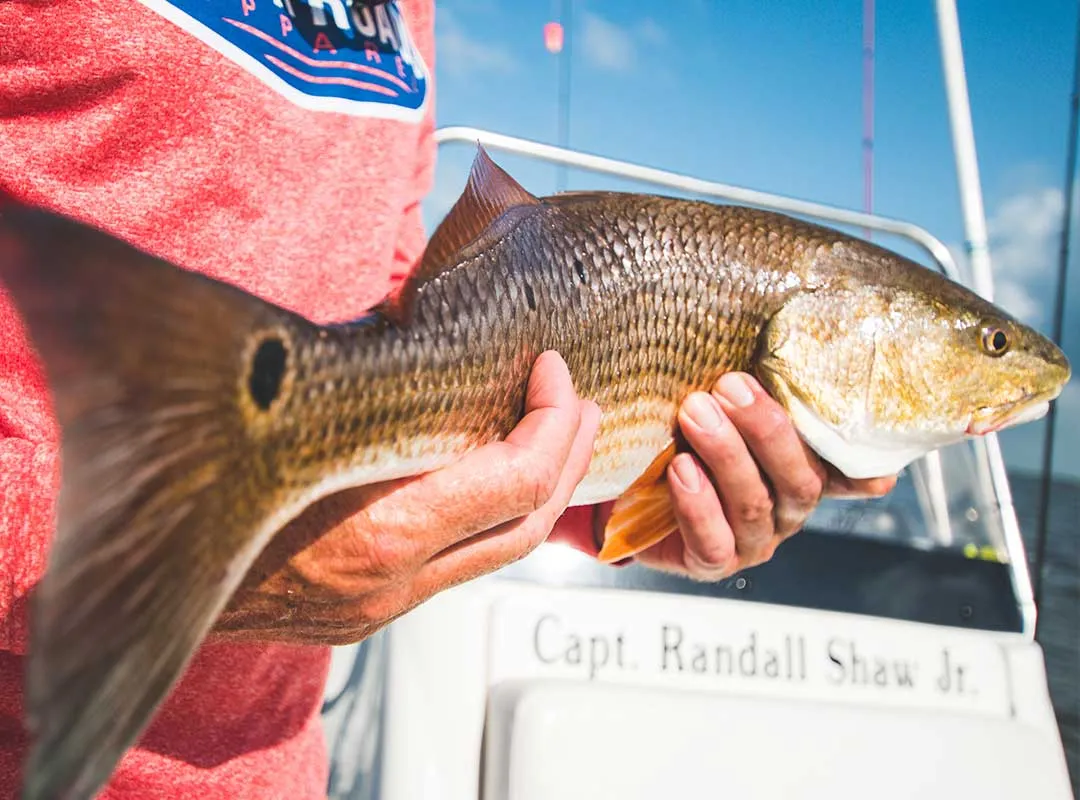
When sight fishing for redfish, whether using artificial lures or live bait, presenting the bait naturally and appropriately for the environmental conditions and fish behavior is crucial. Experiment with different baits and techniques to find the most effective method for you.
Secrets to Becoming a Sight Fishing Redfish Expert
To enhance your sight fishing for redfish skills, remember these tips:
1. Check the Tides: Redfish typically feed most aggressively during rising and falling tides. Understanding tide charts will help you plan your fishing trip effectively.
2. Watch for Baitfish: The presence of baitfish like mullet and glass minnows indicates redfish are likely nearby.
3. Look for “Mud Boils”: When feeding in shallow water, redfish often create muddy plumes as their tails stir up the seabed.
4. Observe Seabirds: Seabirds like seagulls and pelicans often hunt in the same areas as redfish.
5. Use Polarized Sunglasses: Polarized sunglasses eliminate glare on the water’s surface, providing clearer underwater visibility and helping you spot redfish.
Sight fishing for redfish is a challenging yet incredibly rewarding experience. Success requires precision, patience, and keen observation skills. The reward for your efforts is the thrill of conquering a powerful fish and the opportunity to enjoy the pristine natural beauty of the Gulf Coast.
Conclusion: Experiencing Gulf Coast Redfish Fishing – A Journey to Conquer Passion
Experiencing sight fishing for redfish in the Gulf Coast is an emotional journey, combining challenge, discovery, and the joy of victory. You’ll not only hone your fishing skills but also immerse yourself in nature, enjoy the fresh air, and admire the unspoiled beauty of the Gulf Coast.
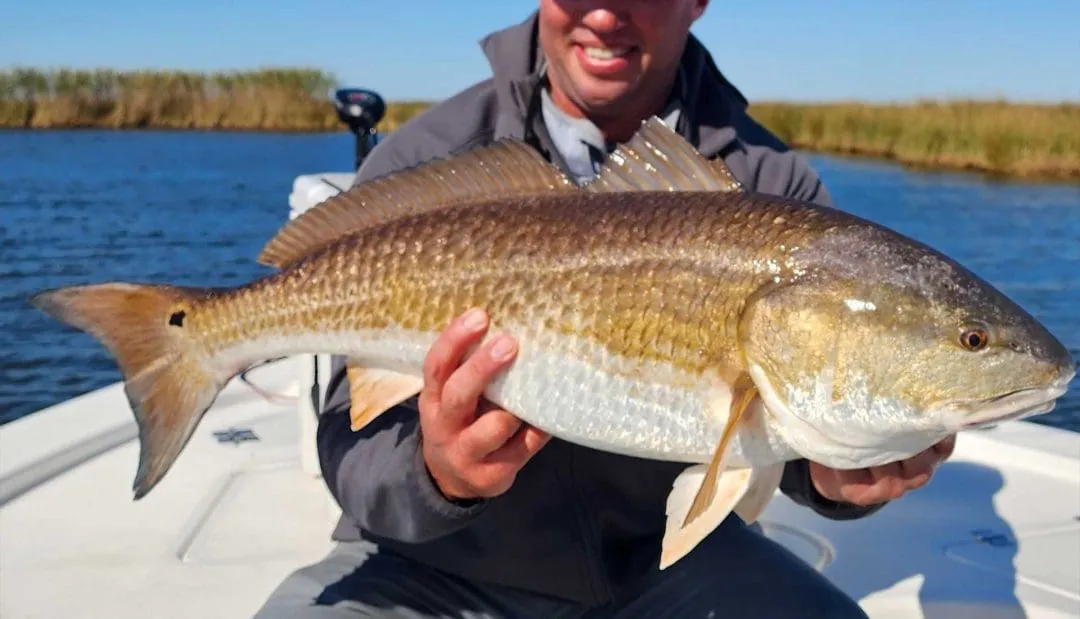
Whether you’re a seasoned angler or a beginner, sight fishing for redfish promises unforgettable memories and will ignite the flame of fishing passion within you. Pack your gear, plan your trip, and get ready for an adventure to conquer the brilliant redfish of the Gulf Coast!
 Polarized fishing sunglasses
Polarized fishing sunglasses